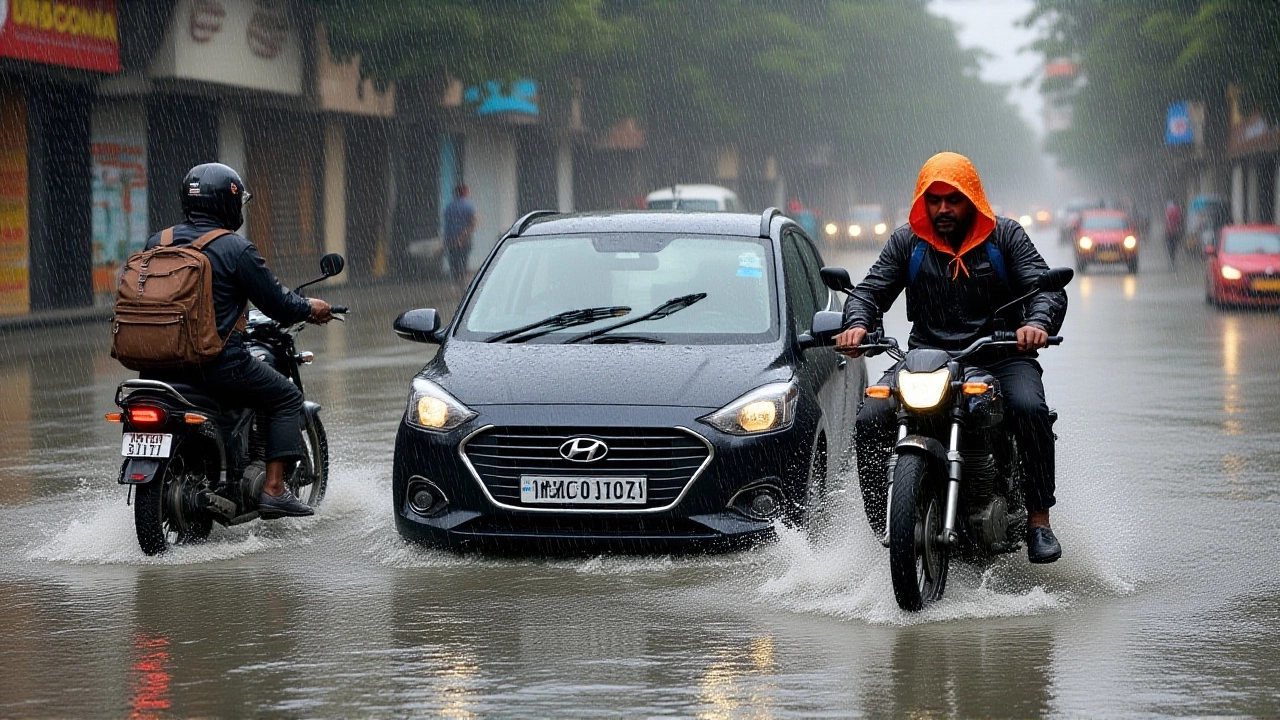Heavy Rain: Understanding Its Impact and Preparing Effectively
When talking about heavy rain, a sustained and intense downpour that exceeds normal precipitation levels. Also known as downpour, it often triggers a chain of weather‑related challenges.
One major companion of heavy rain is the monsoon, a seasonal wind shift that brings prolonged rain to large regions. When monsoon patterns intensify, the probability of heavy rain spikes, especially in coastal and river basins. This link creates a natural chain: monsoon drives heavy rain, heavy rain raises river levels, and rising waters can lead to flood, the overflow of water onto land that is normally dry. Understanding this sequence helps communities anticipate trouble before it hits.
Key Factors to Watch
Accurate weather forecasting, the science of predicting atmospheric conditions using models and observations becomes crucial when heavy rain looms. Modern radars, satellite imagery, and AI‑driven models provide hour‑by‑hour rain estimates, letting authorities issue alerts early. Early warnings give residents time to secure valuables, move vehicles, and clear drainage systems. The better the forecast, the more time cities have to deploy sandbags, activate pumps, and coordinate rescue teams.
Climate change adds another layer to the puzzle. Rising global temperatures increase atmospheric moisture, meaning each storm can dump more water than before. Researchers have documented that extreme rain events have become 20‑30% more frequent in many parts of the world. This shift means that historic flood records may no longer be reliable guides for future planning. Communities now need to redesign infrastructure—like bigger culverts and overflow zones—to cope with heavier downpours.
Drainage design is often the unsung hero in heavy‑rain scenarios. When rain hits pavement, it must travel quickly into storm drains; otherwise, streets flood, traffic stalls, and accidents rise. Properly sized gutters, regular cleaning schedules, and green infrastructure such as permeable pavements or rain gardens can absorb excess water. These measures not only reduce flood risk but also improve water quality by filtering pollutants before they reach rivers.
Safety measures for residents revolve around simple, actionable steps. Keep an emergency kit ready with flashlights, batteries, a first‑aid kit, and non‑perishable food. Know the nearest high ground and avoid low‑lying routes during a downpour. If you’re driving, pull over safely once visibility drops below 100 meters; keeping a safe distance reduces the chance of hydroplaning. For homeowners, consider installing backflow valves to keep sewage from backing up during a flood.
Businesses also feel the ripple effect of heavy rain. Supply chains can stall when roads become impassable, and power outages may disrupt operations. Having a business continuity plan that includes remote work options, backup power, and flexible delivery routes can mitigate losses. Insurance policies that cover flood damage are another crucial safeguard, especially for properties in high‑risk zones.
All these pieces—monsoon dynamics, forecasting tools, climate trends, drainage design, and personal safety habits—form a connected web. Recognizing how each element influences the others empowers you to act before heavy rain turns into a dangerous situation. Below, you’ll find a curated collection of articles that dive deeper into these topics, offering data‑rich insights, real‑world case studies, and practical tips you can start using today.
IMD Warns of Heavy Rain & Thunderstorms in Eastern & Central India
The India Meteorological Department issued alerts for heavy to extremely heavy rain and thunderstorms across eastern and central India from Oct 5‑7, urging caution for flooding and traffic disruptions.
full article